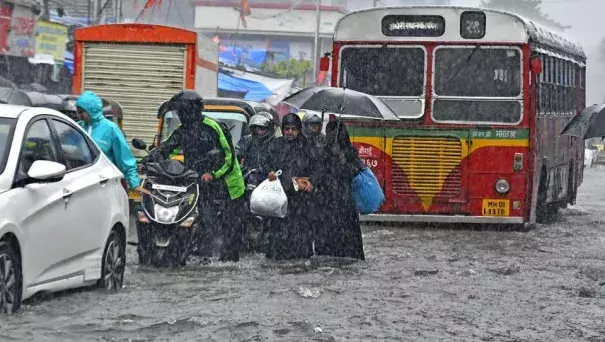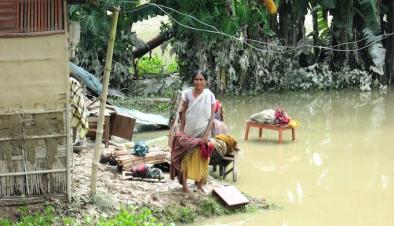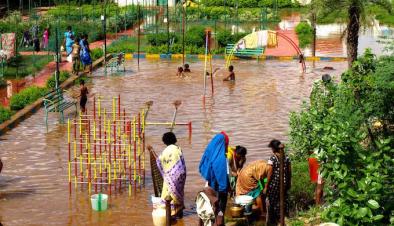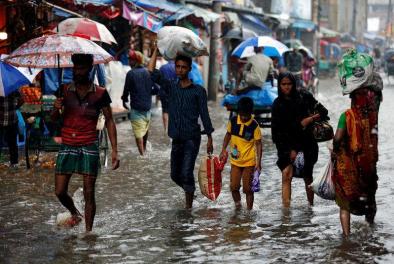Mumbai floods: Why India’s cities are struggling with extreme rainfall

As parts of India’s financial capital went under after more than 200mm rainfall – the equivalent of 11 days of average daily monsoon rainfall in 12 hours – on August 29, 2017, the deluge mirrored similar scenes in other cities this month, a consequence of increased concretisation and increasingly variable rainfall patterns, according to various studies.
As of 6.30pm on August 29, 2017, Santa Cruz in suburban Mumbai received 322mm rainfall over the preceding 24 hours, Andheri 320 mm, Worli on the city’s western seaboard had received 308mm, Borivali 262mm and Byculla 238mm, according to data from the Brihanmumbai Municipal Corporation.
This is the worst flooding since 2005 when, in 24 hours to 8.30am on July 27, 2005, in its worst ever flooding, Mumbai witnessed 944mm of rain, with more than 500 people dying in that flood.
The rain came down in Mumbai much as it had in Chandigarh on the morning of August 21, 2017. By afternoon, the joint capital of Punjab and Haryana had received 112 mm of rainfall, 23 times the city’s average daily monsoon rainfall. Similarly, on August 15, Bengaluru received 37 times, and on August 11-12 Agartala received more than 11 times its average daily monsoon rainfall of the last five years.
...
Increased rainfall intensity in a time of climate change
Recent research indicates that the intensity of these extreme weather events is increasing, according to Pradeep Mujumdar, chairman, Interdisciplinary Centre for Water Research (ICWaR) at the Indian Institute of Science, Bengaluru. Also, the intensity of urban events vis-à-vis non-urban ones is increasing.
“Though it is difficult to attribute any one event to climate change, there is much research results from across the world that is showing that the pattern of multiple extreme events in a season is happening due to the changing climate,” Mujumdar told indiaclimatedialogue.net, a website dedicated to climate-change reportage.
...
Another report, published by the Ashoka Trust for Research in Ecology and the Environment (ATREE), Bengaluru, confirms similar findings: Rain events greater than 100 mm have increased in number in the past 100 years, researchers Jagdish Krishnaswamy and Srinivasan Vaidyanathan wrote. There is an overall increasing trend of events exceeding 100, 150 and 200 mm since the 1900s. But there is an increasing variability in recent decades.
...
It is this variability in rainfall that takes cities by surprise. Professional weather watchers of the India Meteorological Department and private individuals and agencies are able to say that it is going to rain over a particular city, but they cannot foresee its intensity and impact.
Related Content






